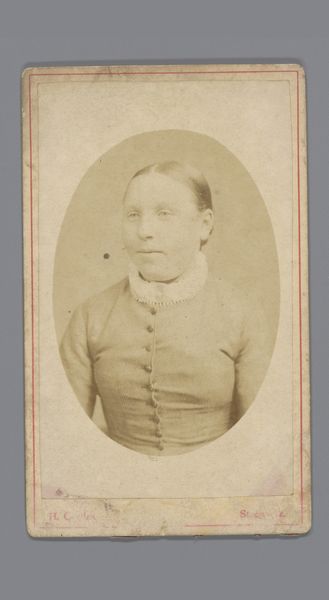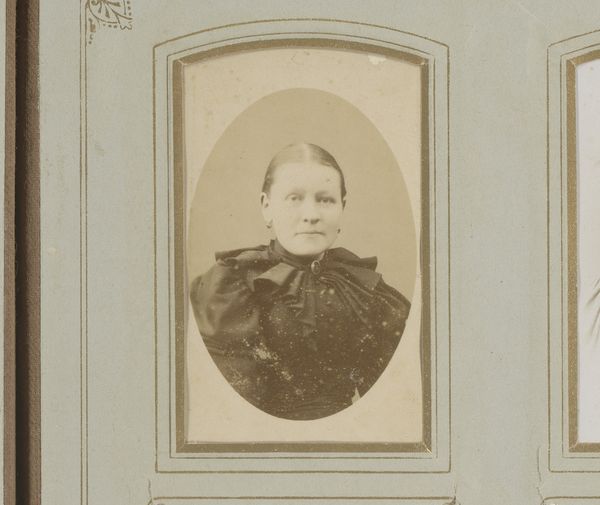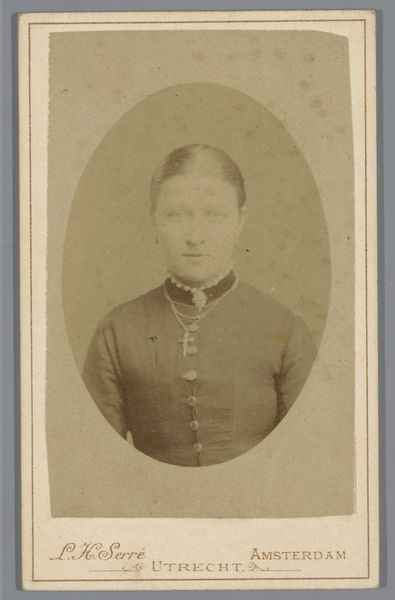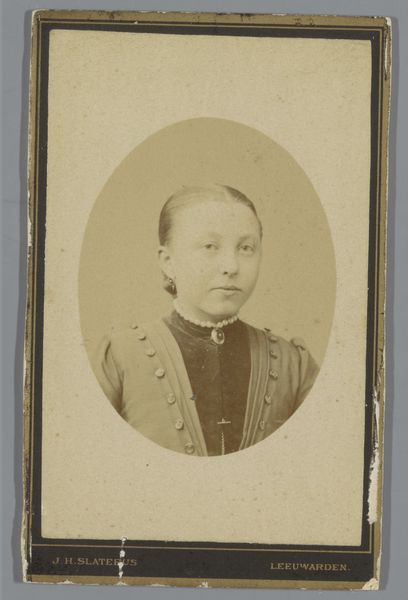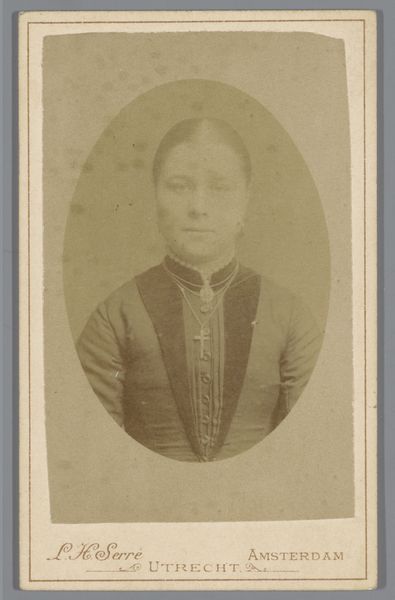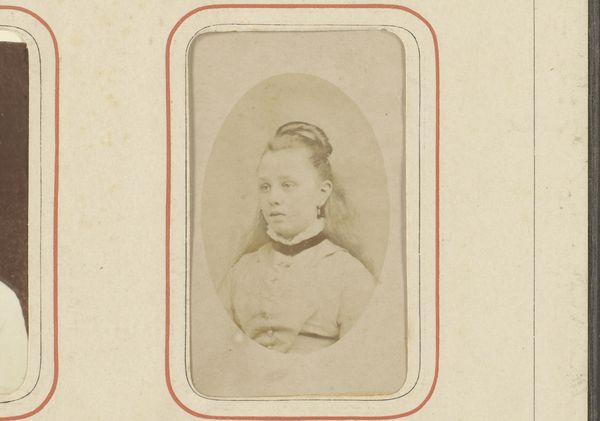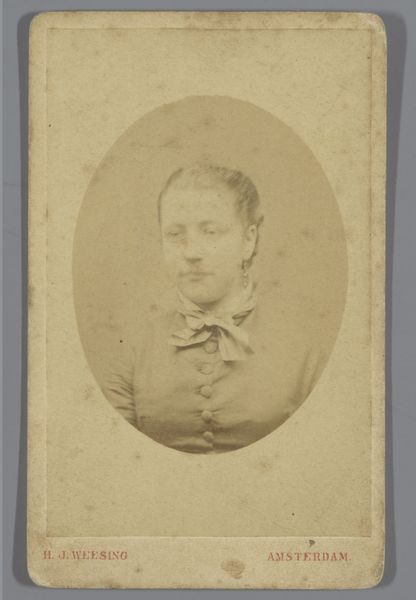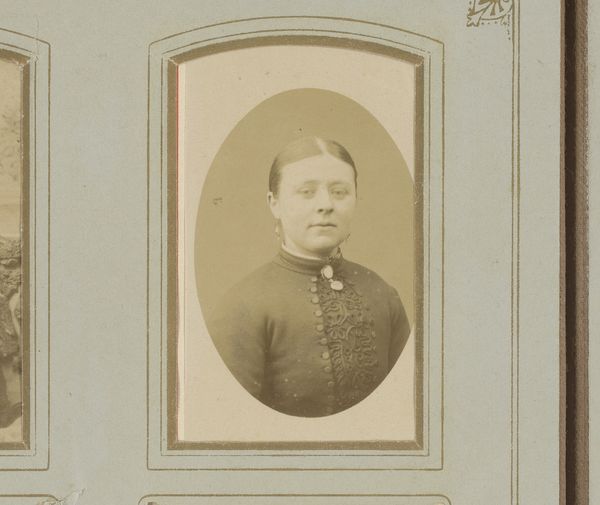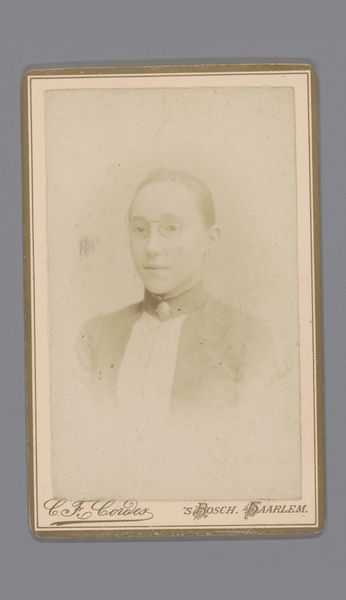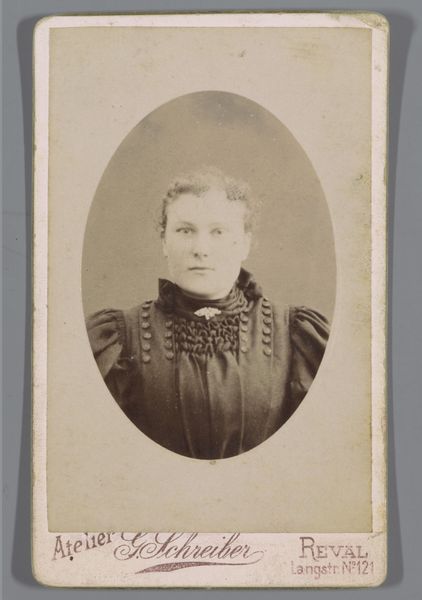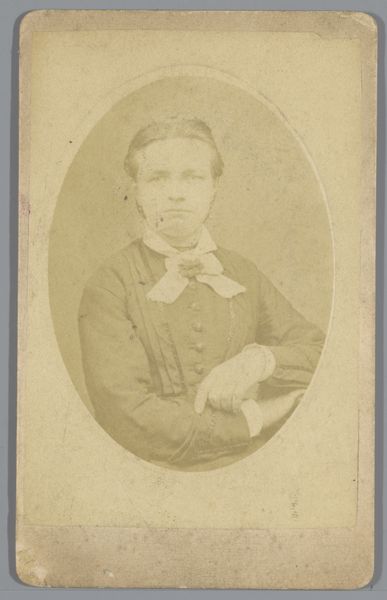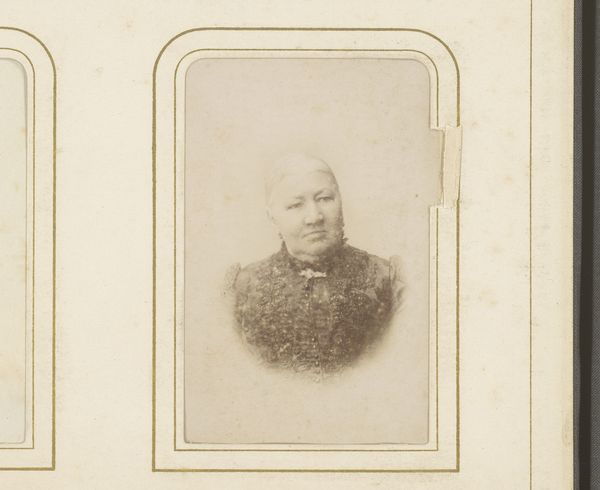
photography
#
portrait
#
vintage
#
photography
#
historical fashion
#
realism
Dimensions: height 105 mm, width 65 mm
Copyright: Rijks Museum: Open Domain
Editor: We're looking at "Portrait of an Unknown Woman," a photograph from sometime between 1854 and 1885, by Photographie De Concurrent. It's a small, faded sepia-toned image, and I find it incredibly intimate, like a glimpse into someone's past. What can you tell me about its context? Curator: Well, consider the rise of photography itself. It democratized portraiture. Suddenly, not just the wealthy could have their likeness preserved. Think about the social implications: the growing middle class seeking ways to memorialize themselves and their families. This photograph becomes a document, not just of an individual, but of a shift in social accessibility and representation. Editor: So it's less about artistic expression, and more about social access? Curator: Not entirely. Photographie De Concurrent was a commercial studio, producing images for public consumption. They were businesses responding to and shaping cultural trends. This image presents a very specific image of the sitter - somber and respectable. We must consider the power dynamics at play; who controls the image, who consumes it, and what values are being reinforced? Was she presenting her best self, her public persona, in a world of changing social values? Editor: That's fascinating. I hadn't considered the commercial aspect so strongly. Did having photos taken at a business rather than by an individual affect how people were posed or presented? Curator: Absolutely! Photographic studios operated with established norms. They understood how to convey status, respectability, even beauty within the conventions of the time. Looking at the direct gaze and carefully styled but simple clothing, what values do you think this image sought to convey to a potential viewer? Editor: Probably the traditional ones of the era, something demure but respectable. Curator: Precisely. It makes you think about how much photography has served, from the beginning, to both reflect and reinforce dominant cultural narratives. Thanks to democratization through the studio business, portraits are historical records offering valuable insights into a time’s social and aesthetic codes. Editor: This has shifted my perspective significantly. I will always now consider photographs' social, commercial, and historical implications when analyzing images!
Comments
No comments
Be the first to comment and join the conversation on the ultimate creative platform.
